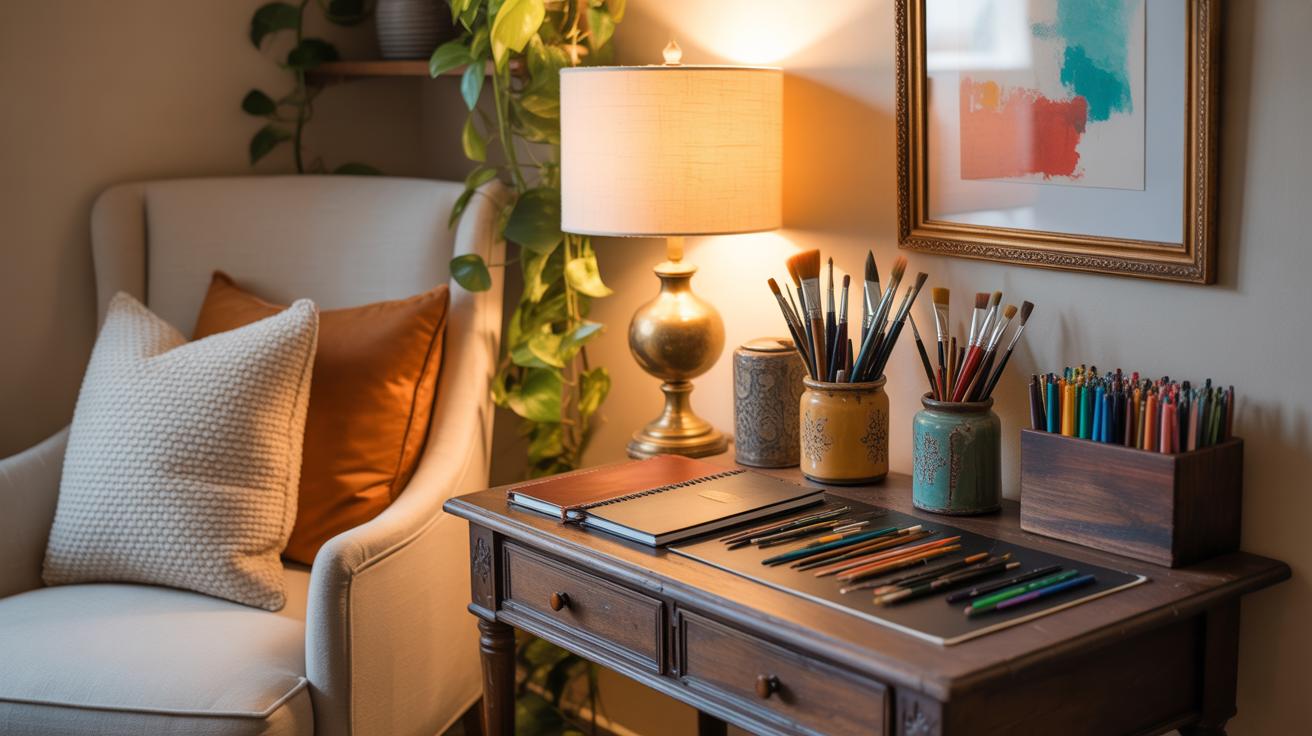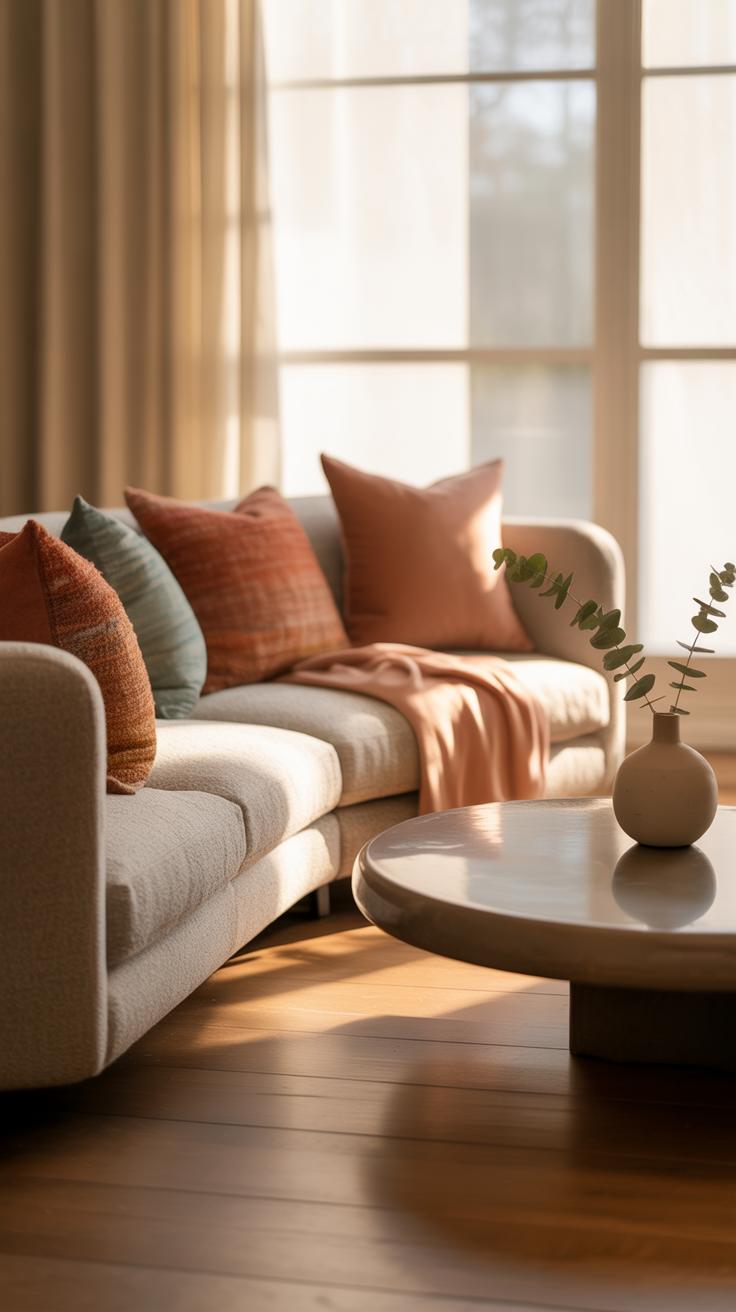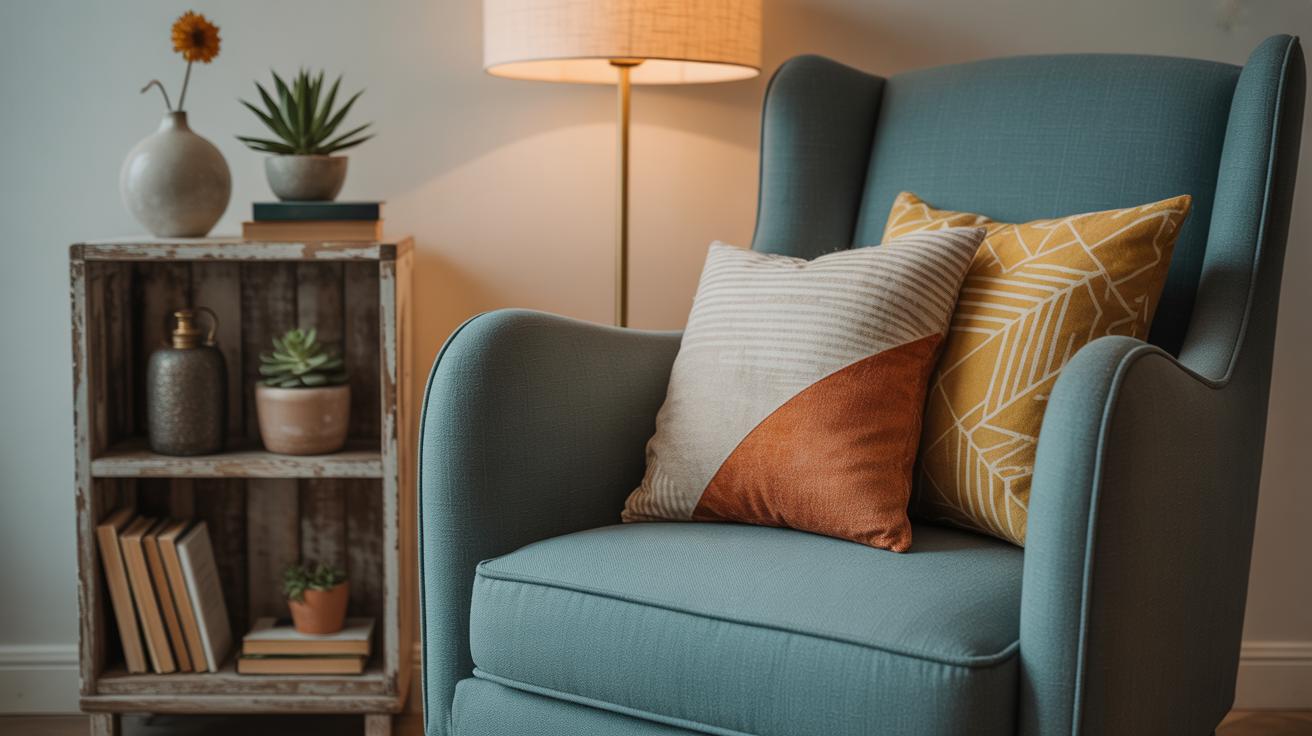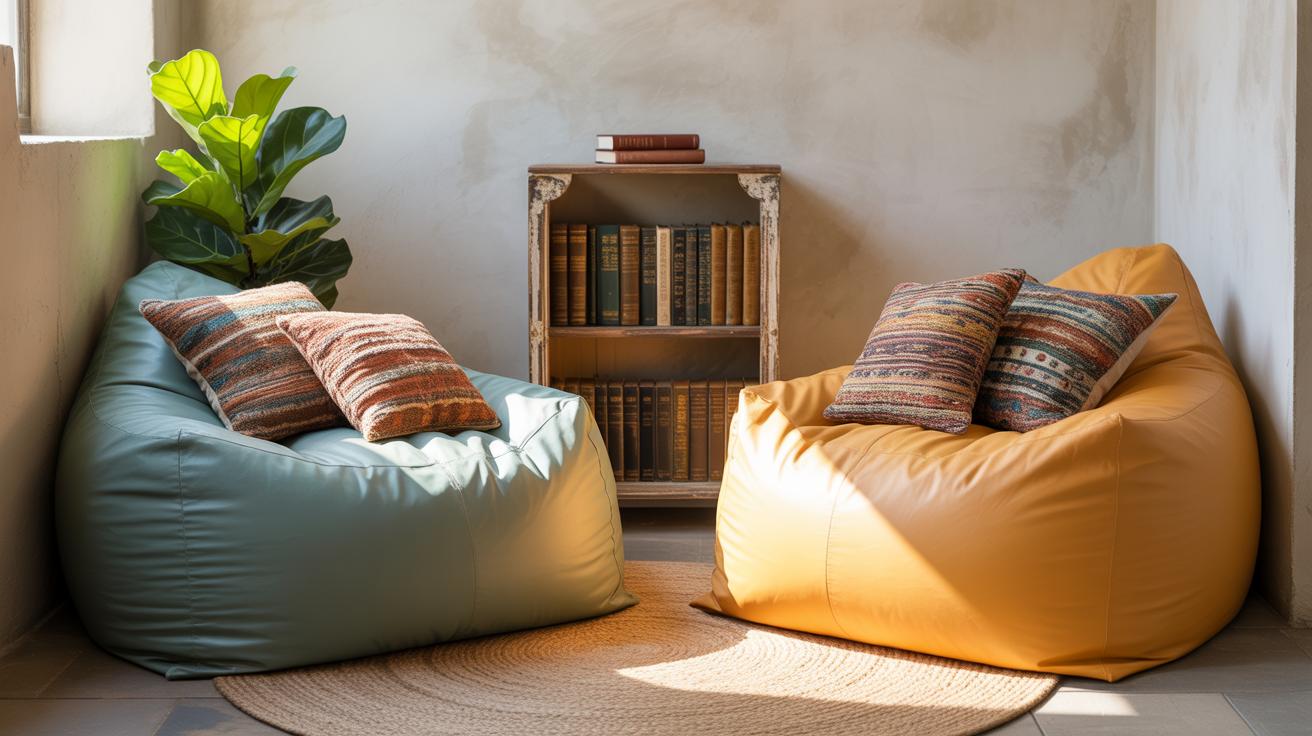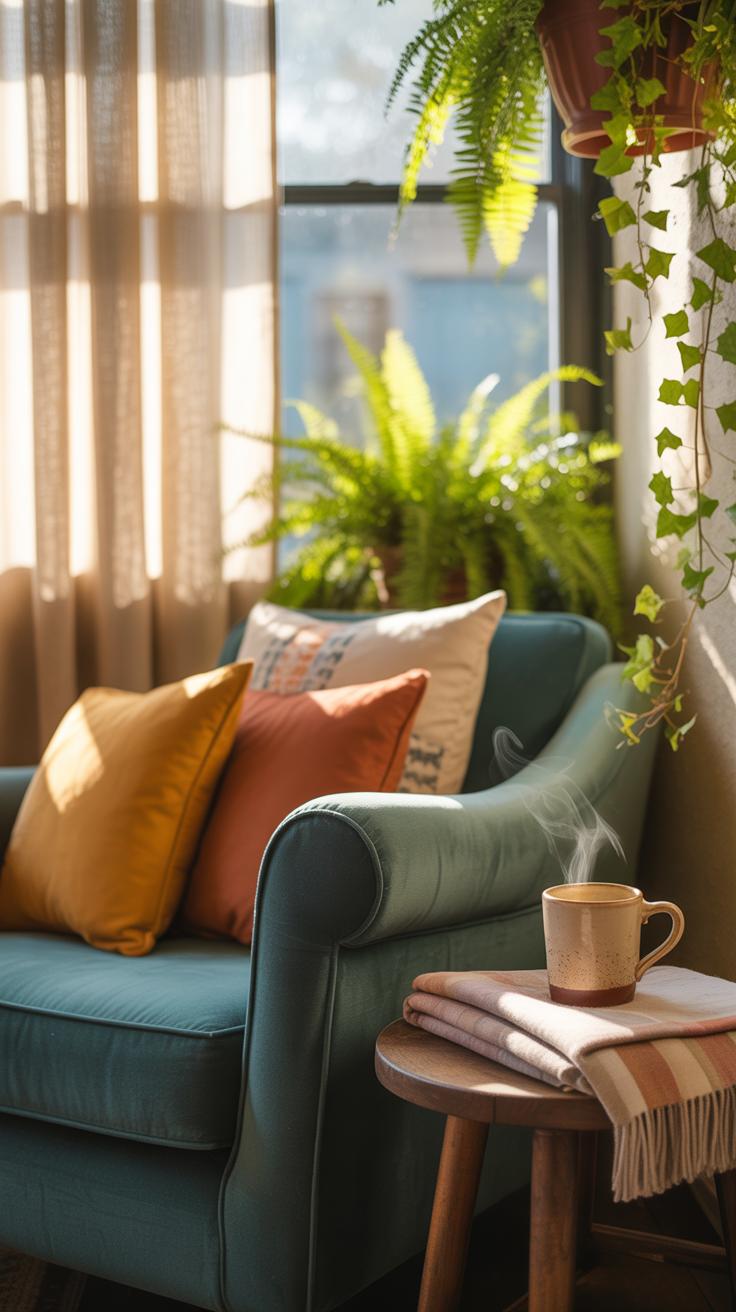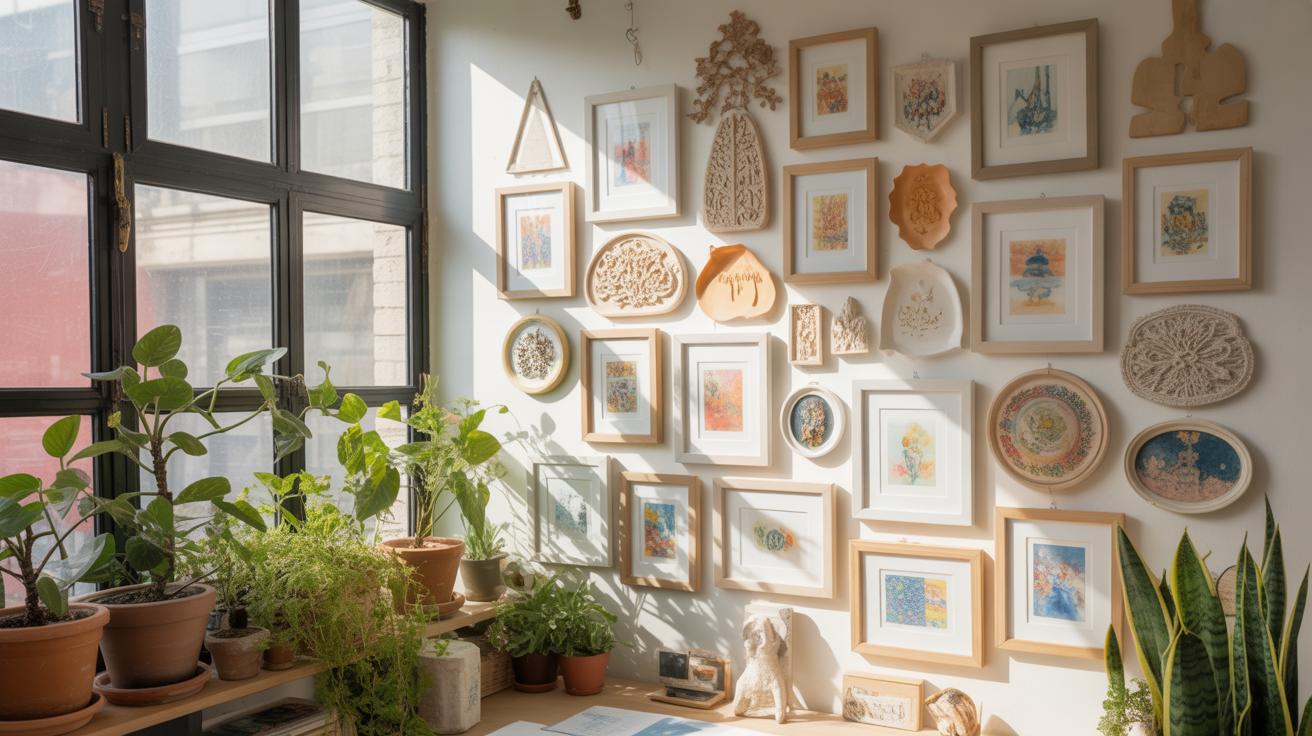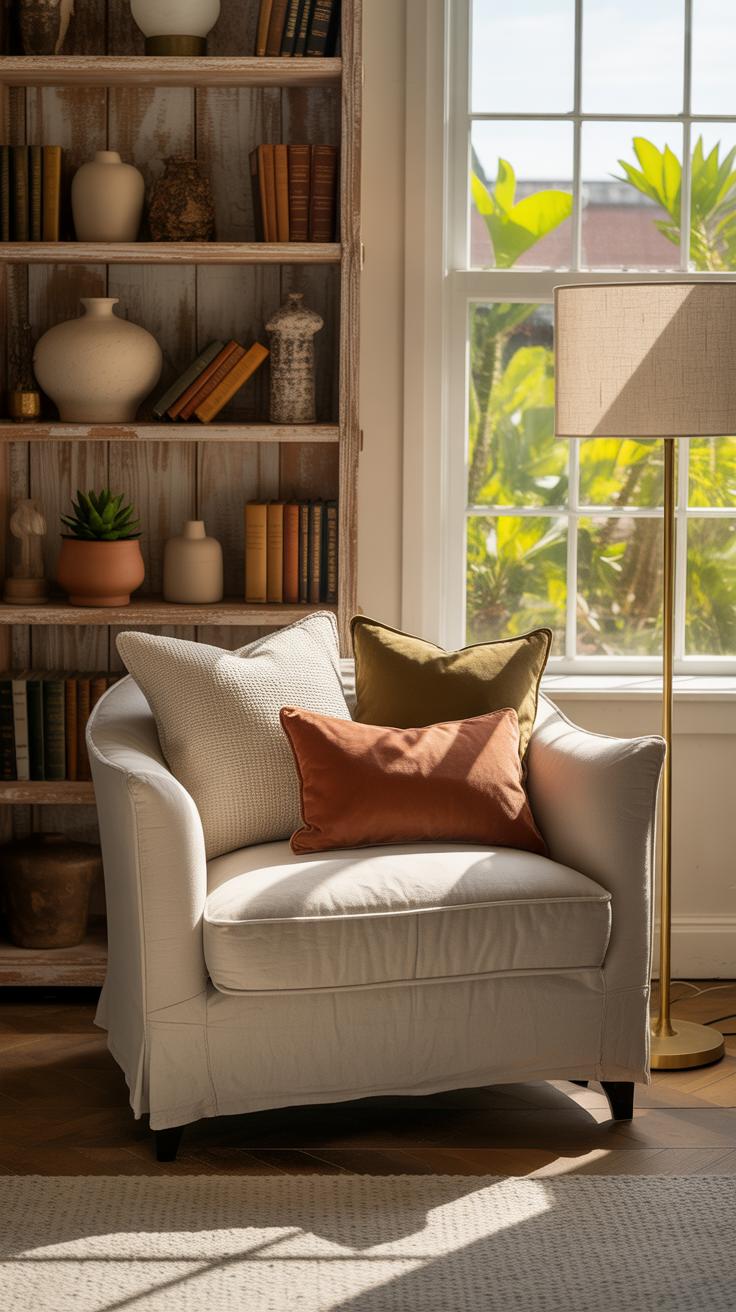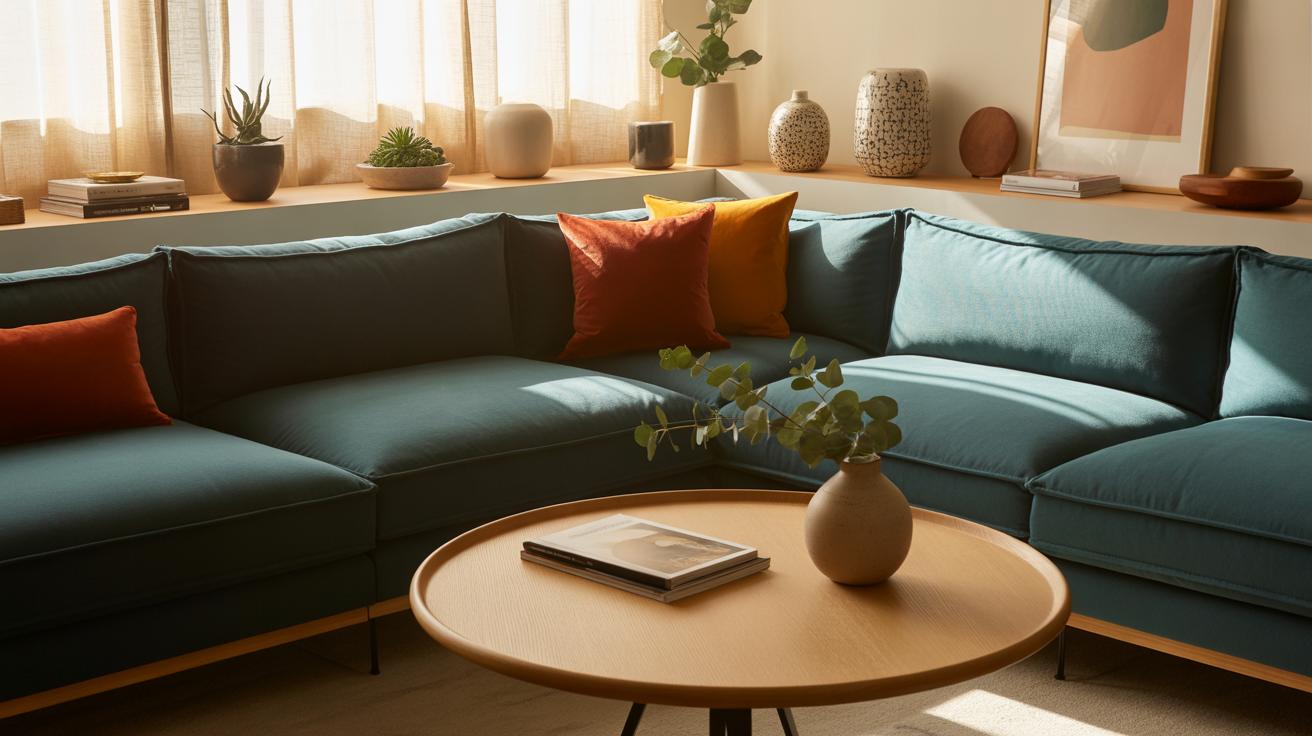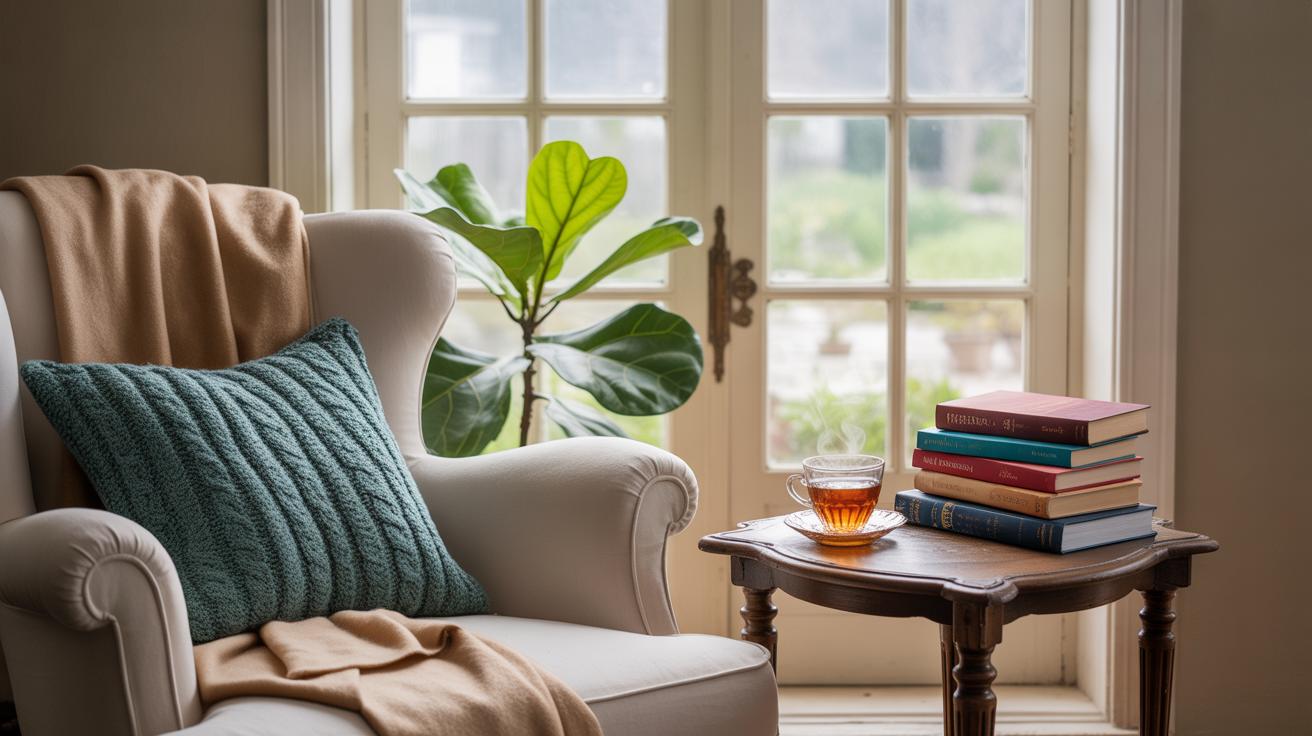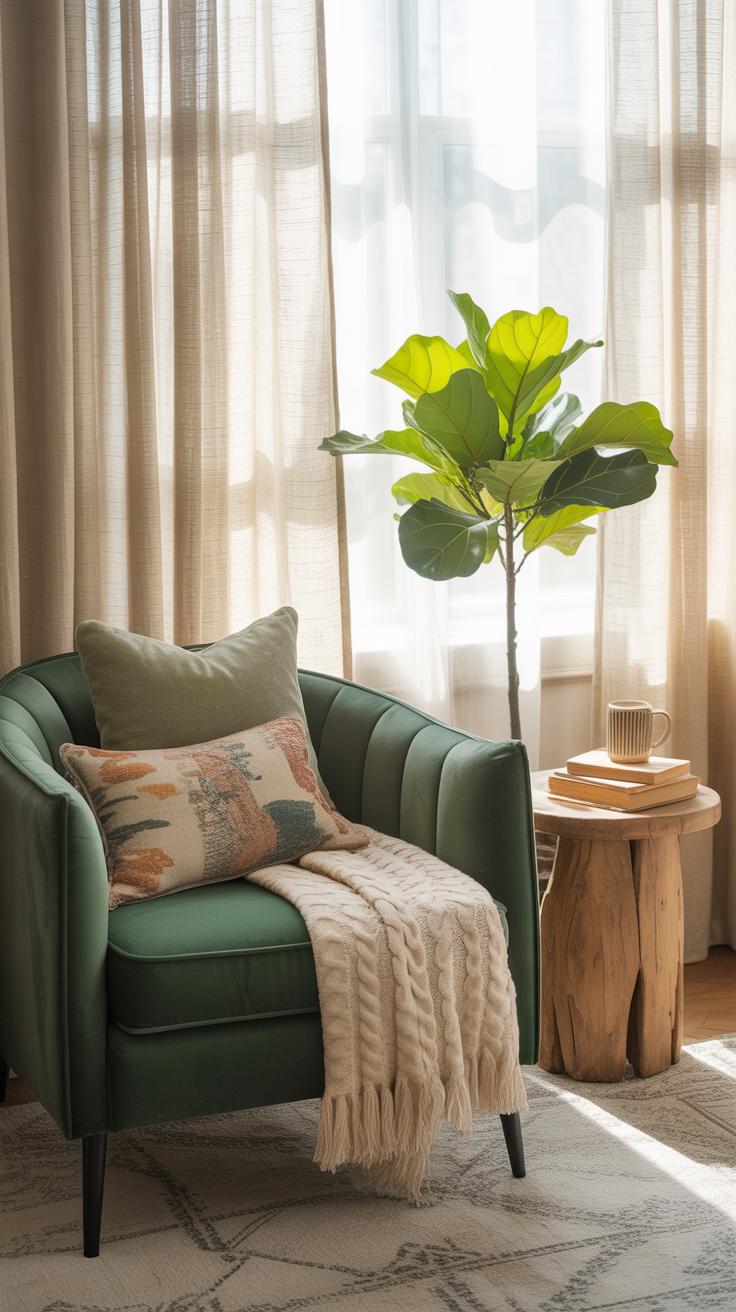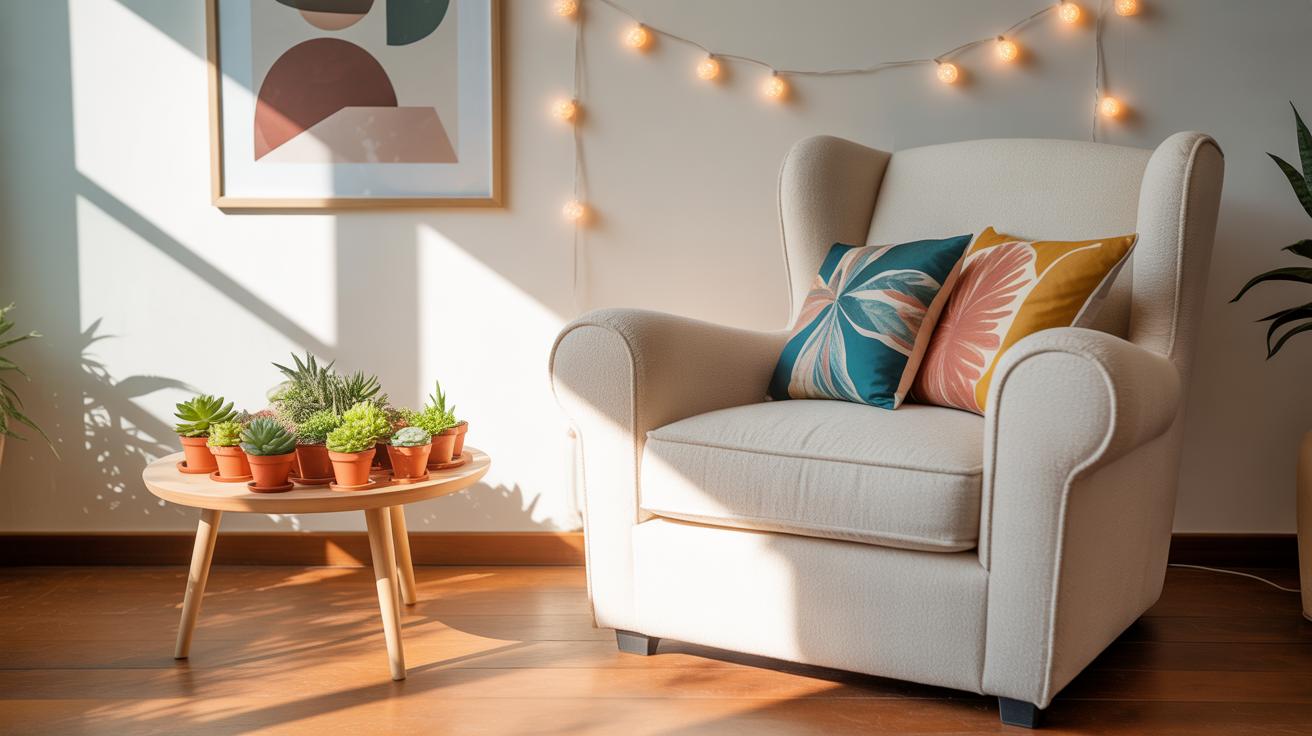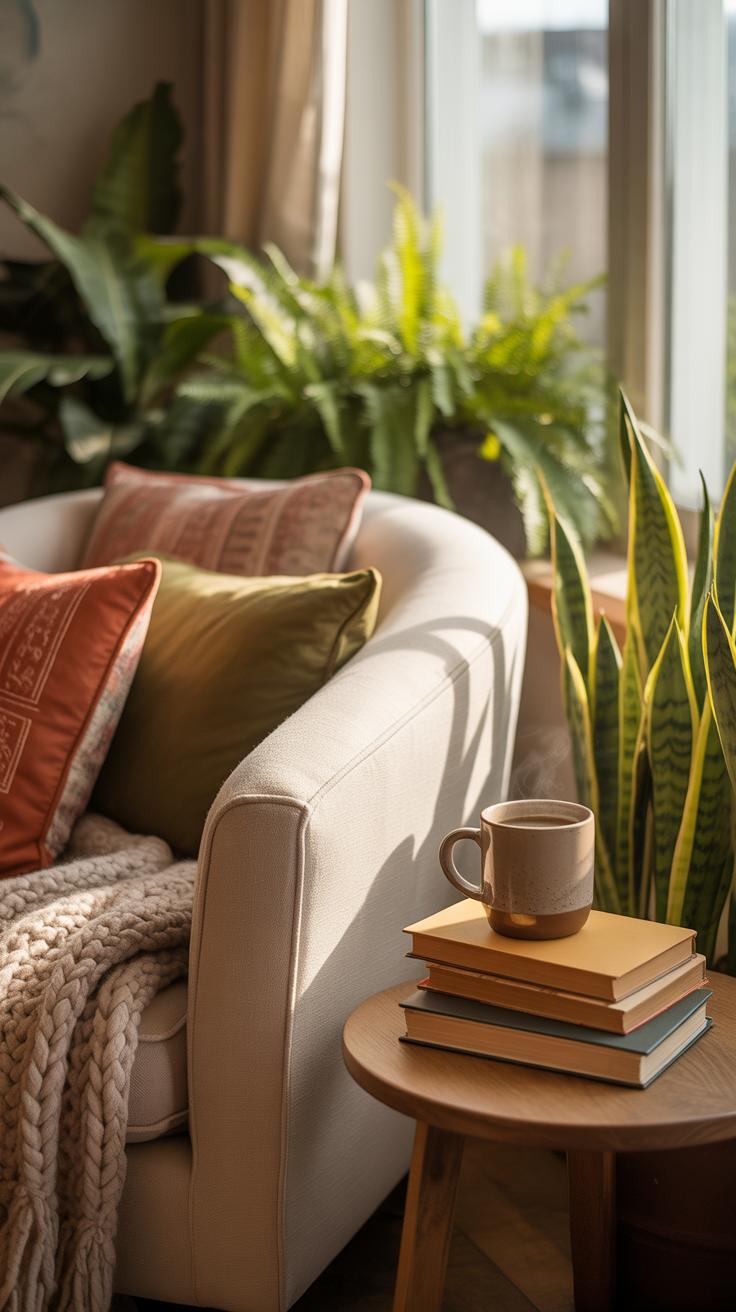Introduction
If you want to make your room feel warm and inviting, creating a cozy corner is a great idea. A cozy corner is a small part of your room where you can relax, read, or just enjoy some quiet time. This article will help you find creative cozy corner ideas for perfect cozy room decor that can fit any space.
We will cover how to pick the best place, choose the right furniture, add decorations, and keep the space organized. By the end, you will know how to turn a simple corner into your favorite spot at home.
Finding the Ideal Location for Your Corner
Picking the right spot for your cozy corner feels trickier than it sounds. You want somewhere that invites you in without distractions—and that means paying attention to a few little things.
Natural light plays a bigger role than you might expect. Sunlight can make a small space feel warm and alive. But sometimes, too much can be harsh or glaring, so maybe near a window with soft curtains works better than directly in front of a bright one.
Quietness matters too, though it depends on what you want. If you love reading or meditating, you’ll prefer a calm, tucked-away spot. But if you enjoy people-watching or background chatter, a corner closer to the activity might suit you just fine.
Space availability is often the toughest part. Small nooks demand creativity to feel inviting rather than cramped, but they lend a sense of intimacy that larger areas might lack. On the other hand, a bigger section can handle more furniture or pillows but might lose that snug vibe. Think about how much room you really need, and be honest about what you’ll actually use.
For example, I once tried a tiny corner beneath the stairs. It felt snug but dark. Moving it next to a side window helped, though I sacrificed quiet since it’s near the kitchen. So there’s a bit of a trade-off involved.
Overall, you want a spot where you can settle in without fuss, but don’t be afraid to experiment and shift things around until it feels right. Sometimes the best cozy corner surprises you by turning up in an unexpected place.
Selecting Furniture for Comfort and Style
Choosing the Right Chair or Sofa
Your cozy corner really depends on the seating. Picking a chair or small sofa that fits the space without overwhelming it is key. Think about the size first. If the nook is tight, a bulky armchair might feel cramped. A slim, armless chair or a compact loveseat can offer a better fit. The shape also matters—rounded edges tend to feel softer, but straight lines might suit a modern look better. Comfort has to be front and center. Try to find something with good support if you plan to stay awhile, like a chair with firm cushions or a sofa with a slight recline. It’s easy to get seduced by looks alone, but if you find yourself shifting every few minutes, it won’t be cozy at all.
Using Cushions and Throws Effectively
Cushions and throws do more than add color—they change how your space feels. A well-chosen cushion can turn a stiff chair into a snug retreat. Mix textures for interest: a velvety cushion with a knitted throw can invite you to linger longer. While more cushions generally ups the comfort, too many make the space feel cluttered. You might want to keep a couple of bigger pillows for lounging and a few smaller ones just for pepping up the look. Throws don’t have to be merely decorative either. Having a soft blanket close at hand makes curling up simpler. Think about coordinating colors with your existing decor, but don’t be afraid to introduce a surprising pop of color—sometimes that little contrast wakes the spot up without ruining the calm vibe.
Adding Lighting for Warmth and Function
When setting up your cozy corner, lighting plays a bigger role than you might first assume. It’s not just about seeing clearly—though that’s important too—but about how the light makes you feel once you settle in with a book or a cup of tea. Natural light, if you’re lucky enough to have it, can be soft and calming during the day, especially when filtered through light curtains or blinds. It gives a sense of openness and brings a little of the outside in, but it might not be enough once the sun sets.
That’s where lamps come in. Think beyond just a desk lamp. Floor lamps with dimmers allow you to adjust the mood easily, moving from a bright reading state to a more intimate glow for when you just want to unwind. Fairy lights often get overlooked, but they scatter light gently and offer a whimsical, twinkling effect. They’re not practical as your only source but layered over other lighting, they add texture.
The tricky part? Balancing practical needs with comfort. Too much light can feel harsh; too little can strain your eyes. You want enough brightness for reading, yes, but also softness that invites relaxation. Some people prefer warm white bulbs for a better cozy effect, while others lean towards cooler tones for clarity. It depends what makes you feel, well, cozy—and maybe a little more awake when needed. Have you noticed how some lighting just feels “off,” even if it’s bright?
Decorating with Textures and Colors
Choosing the right colors for your cozy corner is more subtle than picking what looks nice on a paint chip. Warm tones—like soft ochres, muted terracotta, or gentle taupes—tend to create an inviting atmosphere. But sometimes cooler colors, like dusty blues or soft greens, can also feel comforting if balanced well. It really depends on what makes you feel at ease. Think about the mood you want: relaxed and sleepy or quietly uplifting?
When it comes to textures, mixing them is key. Imagine a plush rug underfoot, a chunky knit throw draped carelessly over a chair, and linen curtains that catch the light just right. These layers don’t just make the corner more tactile but add a kind of visual richness that draws you in. Velvet cushions next to a sleek leather chair might seem odd, yet that clash often creates a balance between softness and structure that your eye craves.
Consider these ideas to bring texture and color together:
- Rugs are a great way to ground the space and introduce patterns or subtle color tones. A high-pile rug can feel especially snug, while a woven jute rug adds an unexpected natural element.
- Curtains can soften harsh windows or let in just the right amount of light. Opt for fabrics like cotton or sheer voile if you want airiness, or heavier drapes for intimacy.
- Wall art doesn’t have to be huge or bold; sometimes a small framed print or a fabric wall hanging can complement the textures below without overwhelming the space.
- Blankets and pillows offer the chance to bring in seasonal color shifts—a burnt sienna blanket for fall, a pale blue throw for spring—and the tactile angle keeps your space feeling alive.
You might find yourself guessing what combination works best by trial and error. That’s okay. The goal here isn’t perfection, but a nook where you just want to stay a little longer, where everything—a color, a fabric, the light—feels just right. Have you thought about how shifting a single hue, or swapping one pillow fabric, can change the whole vibe? It’s a small touch, but it matters more than you might expect.
Personalizing Your Cozy Corner Space
Adding Personal Touches
When you bring personal items into your cozy corner, the space starts to feel distinctly yours. Think about that stack of books you keep picking up, or photos that always make you smile—those little things carry meaning and memory. You don’t have to fill every shelf or wall with these; sometimes, just one or two carefully chosen objects make the area feel warmer and more inviting. Maybe it’s a favorite mug on a side table, or a knitted blanket from a loved one tossed casually on a chair. These touches don’t just decorate; they comfort you, remind you of good times or quiet moments, and create a kind of private sanctuary in your home.
It’s tempting to want everything perfectly displayed, but those small imperfections—like a slightly crooked frame or a book worn from use—add a sense of authenticity. It might even make you feel more settled, knowing this isn’t a showroom but a lived-in spot just for you.
Choosing Plants for a Natural Feel
Plants do something interesting—they bring a soft edge to a corner that might otherwise feel closed off or static. The green is easy on the eyes, and it shifts almost imperceptibly as you move through the day. Plus, a bit of nature indoors seems to reduce stress, though that might be just my guess from when I’ve sat beside my tiny fern during tough afternoons.
Some houseplants demand lots of care, which might not be what you want in a calm space. Instead, consider options like:
- Snake plants, which tolerate low light and irregular watering.
- ZZ plants, which manage well even if forgotten now and then.
- Spider plants, which don’t need fancy conditions and grow happily in indirect light.
Having something alive in your corner connects you to the rhythms of life outside your door. But remember, it’s supposed to add comfort, not responsibility. Pick what feels manageable for you, so it becomes a pleasure, not a chore.
Organizing the Cozy Corner Efficiently
Checklist for Keeping Your Cozy Corner Tidy and Functional
Start by deciding what truly belongs in your cozy corner. Is it mostly for reading, relaxing, or maybe a little bit of work? Once you know its main purpose, you can focus on essentials only—no need to crowd the space with things you seldom use.
Try this checklist to stay on track:
- Keep a small basket or box for items like remotes, glasses, or notebooks.
- Designate a spot for your current book or magazine—this avoids piles everywhere.
- Set aside a place for blankets or throws, preferably within easy reach but neatly folded.
- Use a tray for drinks or snacks to prevent spills and clutter.
- Clear out anything that doesn’t serve relaxation or your specific routine.
Checking this list now and then can keep your corner inviting, which is kind of the point, right?
Storage Solutions for Small Spaces
Small cozy corners don’t have to feel cramped if you choose your storage wisely. Think vertical as well as horizontal space. Wall-mounted shelves can hold books or decorative items without eating up floor space. If shelves seem too formal, try stacked crates or vintage suitcases that double as storage and style.
Under-seat storage is another gem. Seats with hidden compartments can stash blankets or magazines without draining your room’s visual calm. Baskets are a straightforward choice. Pick ones that slip under tables or fit snugly in corners; they’re simple but really helpful.
Sometimes, a narrow rolling cart can work wonders for keeping essentials organized and mobile—perfect if you want to rearrange often or pull your cozy supplies into the living area.
Maintaining Clutter-Free Comfort
Keeping your cozy corner tidy doesn’t demand a big routine. Even five minutes a day makes a difference. Try spending a little time straightening pillows, folding throws, and clearing any stray items. Think of it like a quick reset—it helps your space stay inviting and pleasant.
It might feel tedious at times, but a clean spot feels better, maybe even helps your mind settle. You’ll notice it gets easier the more you do it.
One easy trick: place a small cloth or mini-vacuum nearby for quick dust or crumb clean-up. It’s surprising how little annoyances can pile up and silently disrupt your chill zone.
Comparing Cozy Corner Styles
Modern Versus Rustic Cozy Corners
Modern cozy corners often feature clean lines, neutral colors, and sleek furniture. Think simple shapes, a cool palette, and minimal patterns. It’s almost like the space breathes—a calm and uncluttered vibe that can feel refreshing or sometimes a bit cold, depending on you. One advantage is that modern setups usually require less maintenance. Materials like metal and glass are easy to clean, and everything fits together in a logical, efficient way.
Rustic corners, by contrast, bring warmth through natural textures: exposed wood, rough fabrics, and earthy tones. You might picture a worn leather chair, a chunky knit blanket, or a reclaimed wooden crate doubling as a side table. The charm lies in the imperfection and tactile comfort. It often feels like stepping into a cabin or a countryside cabin—cozy but less polished. The downside is that rustic spaces can seem a bit cluttered or heavy if you’re used to lighter rooms. Still, the homeliness a rustic corner brings is hard to ignore.
Minimalist and Bohemian Styles Compared
Minimalist cozy corners are pared down to basics—think clear surfaces, limited decor, and soft neutral colors. The idea is to create quiet spaces that reduce distractions. I find these corners surprisingly calming, although sometimes they border on feeling sparse, especially if you like having lots of personal items around. The strength of minimalism is how easily it adapts to small spaces and helps you avoid overwhelm.
Bohemian corners take a different path, embracing color, pattern, and layers. They mix textiles, plants, and eclectic furniture for a relaxed, lived-in feel. You might spot a Moroccan rug next to a hanging chair and a shelf crowded with books and trinkets. Bohemian vibes can feel chaotic to some, but they offer endless opportunities for personal expression and comfort. It’s not about perfection but about collecting moments and memories in one place.
Avoiding Common Cozy Corner Mistakes
Too Much Clutter in Small Spaces
It’s easy to think that stuffing a cozy corner with all your favorite things will make it feel warm and inviting. But, often, the opposite happens. Too much clutter in a small space can quickly overwhelm it. Instead of feeling snug, it feels cramped, and that kills the whole point of coziness.
When you pile up cushions, books, blankets, and knickknacks without much thought, your eyes don’t know where to rest. Simplifying your space by keeping only a few meaningful items helps breathe life into your corner. Try choosing one or two standout pieces rather than filling every inch. Maybe a soft throw and a small stack of your favorite books—nothing more. It can be hard to let go of things, but less truly is more in this case.
Ignoring Lighting and Comfort
Lighting matters a lot. I once set up a cozy corner near a window but totally forgot about how the light changed in the afternoon. By evening, the space was poorly lit, making it less inviting—almost gloomy. Poor lighting can make a cozy corner feel cold or even stark.
Comfort goes beyond just a soft chair or plush pillow. Think about the ergonomics, the texture, and how you actually use the space. It doesn’t help if your chair looks great but leaves you stiff after a few minutes. Sometimes, people pick stylish furniture that isn’t comfortable, or they ignore the need for adjustable, warm light sources like lamps. A corner must feel welcoming both visually and physically, or else it won’t be a place you want to spend time in. Don’t settle for less just because something looks good on paper—test and adjust until it fits you well.
Example Cozy Corner Setups at Home
Small Bedroom Cozy Corner Example
When space is tight, creating a cozy corner might feel tricky, but it’s definitely doable. Think about a small bedroom corner near a window or under a sloped ceiling. A compact armchair or a floor cushion can be the main seating—something that doesn’t overwhelm the space. You might want to choose light colors or soft fabrics, like a plush velvet or chenille, to keep things inviting without feeling cramped.
Add a small side table or a floating shelf to hold a book or a cup of tea. Lighting is crucial; a clip-on reading lamp or a small table lamp works well here. Throw in a soft throw blanket and a couple of cushions—mix textures to add depth. It’s surprising how a tiny area, when styled thoughtfully, can become your go-to spot for unwinding. Maybe even a small plant nearby can freshen it up without taking up too much space.
Living Room Cozy Nook Example
In a living room, you have more room to play with style and function. Picture a corner with a comfy armchair or a small loveseat paired with a floor lamp that casts warm light. Maybe incorporate a low bookshelf or a basket for blankets and magazines. The furniture should invite lingering, but also fit the overall room design—so the corner feels part of the whole, not an afterthought.
Try layering in different textures—like a wool rug, a leather pouf, or linen cushions—to make the space more tactile. Sometimes a statement throw or a patterned cushion can be just enough to break the monotony without crowding the area. You might want to add some art or framed photos on the walls to personalize the nook. A spot like this can blur the line between comfort and style. Do you prefer more color or neutrals here? That’s always a tricky balance to find.
Conclusions
Creating your own cozy corner does not have to be difficult or expensive. By choosing the right spot, adding comfortable furniture, and using the ideas shared here, you can make a space that feels just right for you. Think about what makes you feel relaxed and add those touches to your corner.
Remember to include soft lighting, personal items, and easy-to-reach essentials. A cozy corner is your little retreat inside your home. Use this guide to build a perfect cozy spot where you can enjoy your time and feel at peace.



